In this article, we'll look at 25 actionable tips from Android developers that will allow you to use your smartphone 100%.
- Lock screen customization
- Disable unnecessary applications
- Phone search
- Tracking mobile traffic
- Configuring Do Not Disturb
- Limiting the use of your phone
- Automatic photo backup
- Voice matching “Ok Google”
- Different home screens
- Google Assistant
- Screen pinning
- Entering text by swiping across the screen
- Power saving mode
- Splitting the screen between apps
- Installing default apps
- Enabling options for developers
- Screen rotation lock
- Autocomplete service
- Broadcast screen content
- Notification channels
- Managing apps in the Play Store on the web
- Changes to the quick settings section
- On / off protection from hard reset – factory reset
- Third-party app download
- Saving maps offline
Lock screen customization

Android smartphones have various lock options. In many cases, you are prompted to configure the lock during the initial device setup. You can choose a pin code, password, etc. Most modern devices have a fingerprint scanner, which is now considered the fastest way to unlock.
To configure the screen lock, open the system settings section and go to the “Security” subsection. Some smartphones have a separate lock menu. The lock is needed to use payment systems like Android Pay and prevent device reset.
to the content
Disable unnecessary applications
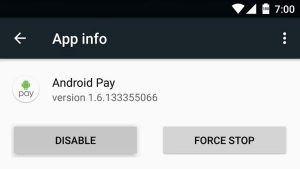
Almost always, a smartphone has programs not only from Google. If you don't need them, you can get rid of them.
Some programs can be removed simply through the store or settings. However, if they are part of the operating system, these applications cannot be removed. At best, they are allowed to be disabled. To do this, go to the “Settings”> “Applications” section and find the desired one in the list of programs. At the top there is a Disable button, which removes the application from the list of programs and prevents it from running in the background.
to the content
Phone search

Sometimes mobile devices get lost. It's good if this happens at home, if he falls somewhere under the sofa or behind the chair. In order not to have to look into all the corners yourself, you can use the Google tool called “Find Phone”, which was previously called Android Device Manager.
It can be accessed via the Internet on a mobile device or computer. You need to log into your Google account and select your lost device from the drop-down menu. Further you will be shown where this device is now. You can make your phone ring even if it is in silent mode.
If you lost the device somewhere outside your home and cannot return it, you can remotely delete all data on it.
to the content
Tracking mobile traffic

Most users do not have unlimited mobile Internet. In order not to use up traffic and not overpay for it, you need to keep track of how many megabytes you have left during the day or month.
There is a menu for this in the system settings. The names may vary from manufacturer to manufacturer and version Android (something like “Data Transfer” or “Traffic Control”), but usually this section is located somewhere at the top of the main system settings screen.
Here you can set a threshold for warning about traffic consumption or even automatically turn off the mobile Internet. The Google store has an app called Datally. It collects data from system settings and helps you track traffic usage.
to the content
Configuring Do Not Disturb
Dealing with notifications can be tricky. Different companies offer different names for the settings, Google has not been consistent over the years. The notification settings are available under Settings> Sounds and Notifications. The option is usually called “Do Not Disturb”. Here you set the activation time for the mode, what will be blocked and which contacts can still call you.
Android Pie will open all notifications by default in DND mode. If you need notifications from some applications, you can set exceptions for them.
to the content
Limiting the use of your phone
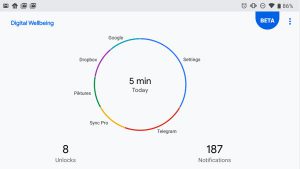
Gadget addiction is a significant problem these days. Android 9 Pie has tools to combat this addiction. Some devices offer a feature called “Digital Wellness”. It shows statistics on the use of applications, how often and for how long you work with them and look at the screen.
You can set a time limit for daily work with programs. It also shows how many notifications you receive and how many times you unlock the screen. There is a mode called Wind Down where the colors on the screen fade out and turn gray.
to the content
Automatic photo backup

What could be worse than breaking or losing a smartphone with important information on it, including photos? You can avoid this by opening the Google Photos app and turning on automatic backups.
The default mode is high quality and unlimited disk space in the Google cloud. The photos are compressed, but they still look good. If you want to keep the original image, you can use Google Drive storage. 15 GB is free there, you have to pay for more.
to the content
Voice matching “Ok Google”

At the heart of Android lies the Google search engine. By saying “Ok Google,” you can start searching from anywhere in the system. This always works on the home screen and in the search bar, but in the settings you can make it so that “Ok Google” works in all places of the operating system.
Go to Settings> Language & Sound> Google> Voice Match. Activate Access with Voice Match.

Then you need to say “Ok Google” several times so that the system remembers your voice. Now the command is available everywhere, some devices support it even with the screen off.
to the content
Different home screens
Most Android – smartphones have their own interface from the developer, like Samsung Experience, shells Xiaomi MIUI, Huawei EMUI, Sony, etc. . This includes the home screen. If you don't like it, you can put another one. Skins like Nova Launcher or Action Launcher can improve your device experience. It will be possible to change application icons, assign gestures for navigation, organize programs and the like. You can change your home screen at any time in the Home menu in the settings.
to the content
Google Assistant

If you've set up Okay Google, there are two ways to access the Google Assistant. You can say this phrase out loud or perform a long press on the Home button. Then you can speak commands.
For several months, this feature was only on Google Pixel smartphones, but since then it has spread to devices running Android Marshmallow and more modern versions.
The assistant now understands more complex conversational phrases compared to the old Google voice search. It can be integrated with third-party services such as IFTTT, Samsung SmartThings, Nest. This is a great way to automate your home and search the web. The assistant can even read news aloud.
to the content
Screen pinning
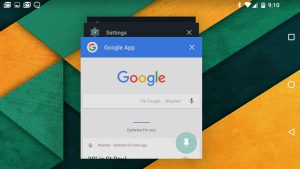
If you need to give someone your smartphone, you probably don't want them to have access to everything that is on it. This can be prevented by pinning a specific window to the screen. This feature is enabled by default on most devices. If not, you need to enable the option in the “Security” section.
Click on the pin icon in the list of running programs and you can pin the screen with one click. In Android Pie with horizontal app switcher, long press on the app icon in the multitasking interface. There you will see the pinning command. If you have lock screen protection installed, you must use the preset unlock option to exit the pinned application.
to the content
Entering text by swiping across the screen

Typing by clicking on buttons is the most common input method. However, many users know how to type without lifting their finger from the screen. You just need to move your finger from one letter to another. The input accuracy may vary on different devices, but nothing prevents you from installing a third-party keyboard and see if it will be more convenient on it. It can be Google keyboard, Swiftkey with numerous settings, and others.
to the content
Power saving mode

All Android smartphones have different power saving modes, sometimes several. Go to Settings> Battery to select one of these modes. For example, Samsung has a normal power saving mode with lower screen brightness and slower processor.
There is also an “Ultra” power saving mode, where only a few applications work on the smartphone. Most devices have basic modes that can turn on when a certain level of battery charge is reached. You can set these levels yourself.
to the content
Splitting the screen between apps

If you have a smartphone on Android 7.0 or newer, you can display two applications on the screen at the same time. To do this, you need to hold the application overview button. The currently open application will shrink and you can select the second one from the list of recent applications.
You can drag the separator between windows with your finger. You can then long-press the browse button again to open only one window, or drag the divider to the edge of the screen. Android Pie has a new horizontal app switcher where you can long press on the app icon at the top in preview mode to split the screen.
to the content
Installing default apps
When performing various actions, Android asks you to select a default application. What if you want to change this app? Some smartphones have a separate settings section for this. On others, the easiest way to clear selected apps is through Settings> Apps.
to the content
Enabling options for developers
Google has hidden the most advanced tools in a dedicated developer menu. Here you can change the animation speed, enable USB debugging, set other advanced settings. To enable options, open the About Phone section at the bottom of the main system settings page. 7 times click on the build number and you will receive a message that you have become a developer. Return to the main menu and at the bottom you will see the section “For Developers”.
to the content
Screen rotation lock

Screen rotation often works when you don't want to. In Android 9, you can change the rotation settings so that the unit always displays the system in portrait orientation, but still has access to landscape orientation.
First, turn off automatic rotation in the settings. Then look for the rotation button at the bottom of the screen the next time you rotate your smartphone. Press this button and the screen will be locked in landscape position until you rotate it back. Press the button again and the screen contents will be displayed in portrait orientation.
to the content
Autocomplete service
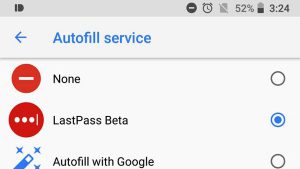
If your smartphone or tablet is Android 8.0 or newer, you no longer have to enter the password manually. Or at least you will do it less often than before. You need to visit the “Settings”> “Input” section and open the advanced settings menu to enable the “Autofill usernames and passwords” function.
By default, you can use Google's autocomplete service, which is bundled with the Chrome browser. Third-party apps like LastPass and Dashlane password managers also support this feature. You just need to click on the login field in any application, and the login and password will be added automatically.
to the content
Broadcast screen content

Do you have a Chromecast or Android TV? If so, you can do more than just broadcast videos to them. Android devices can display the contents of their screen on a TV. On devices with clean Android there is a “Broadcast” icon in quick settings. Click on it and select the device on which the contents of the smartphone screen will be displayed.
On other devices, you can download the Chromecast app and use it.
to the content
Notification channels
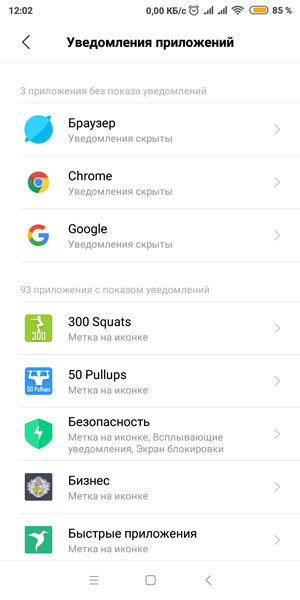
Since Android 8.0 Google has been fighting annoying notifications. Apps now have notification channels where you can change their behavior. You can set how they will appear and whether they will appear at all.
To edit the notification channel, open the app info screen or long press on the notification and tap Details. On Android 9 Pie you can click on the “Information” button and then go to the “Notifications” section. Here you can turn on and off each channel, change the way notifications appear, etc.
On Android 9.0, the devices themselves offer to disable the channel if you frequently dismiss notifications from it.
to the content
Managing apps in the Play Store on the web
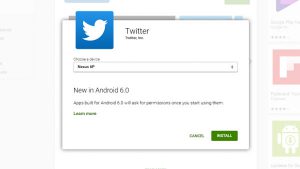
Android has a Play Store app, but the store can also be accessed through a browser. Here you can do everything the same as in the application on your smartphone, but even faster. You can buy and install applications on your smartphone via your computer. You can build a queue of downloads without touching your smartphone at all.
If more than one device is linked to your account, you can specify on which of them you want to install the application.
to the content
Changes to the quick settings section
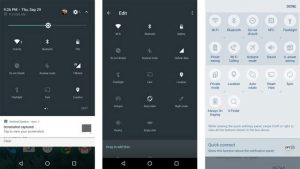
Quick Settings are toggles at the top of the notification bar. One swipe opens notifications, and the second opens the quick settings section. Here you can define which settings will be displayed.
Google added this feature in Android 7.0, manufacturers are also required to allow changing radio buttons in this menu. Open quick settings and click on the “Edit” button. Then a long press on the icon will drag it to another location. The first row of settings is available at the top when opening notifications. Additional ones are opened with one more downward gesture. App developers can add tiles to display them in quick settings. For example, Twitter has its own tile, VPN apps can be turned on and off in quick settings.
to the content
On / off protection from hard reset – factory reset
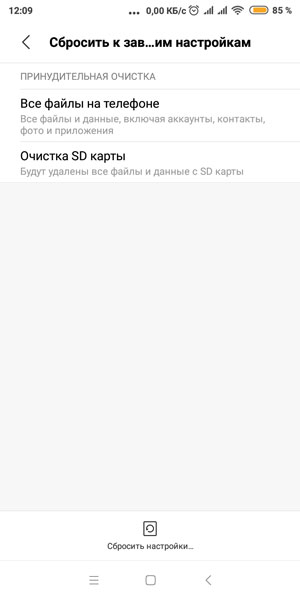
In version Android 5.1, the developers added protection against factory reset. This can come in handy in case your smartphone has been stolen or you yourself have lost it. Outsiders will not be able to reset and log in with their account without knowing your Google password.
However, this can get in the way if you yourself sell or donate your smartphone to someone. Factory data reset protection is automatically enabled if Secure Lock is enabled. You need to make sure that you do not reset your smartphone earlier than 24 hours after changing your Google password. Otherwise, the lock is activated for 72 hours.
To disable factory reset protection, you need to disable the secure lock screen, enable OEM unlock in the developer section, or manually delete your Google account in the settings. The latter also performs a factory reset.
to the content
Third-party app download
There are several million programs in the Play Store, but there are some that are not there. To install such an application, you need to go to the “Security” section and enable installation from unknown sources. This will allow you to install applications via APK files that you can download from the Internet.
There are many such files in services like APK Mirror, Amazon Appstore, F-Droid, Mi-Shop. The store Amazon offers many paid apps for free, and you can find open source apps on F-Droid. APK Mirror allows you to find older versions of apps if you need them for some reason.
to the content
Saving maps offline
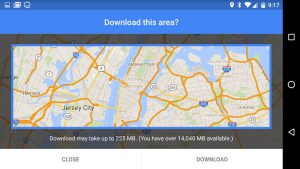
Google Maps allows you to work without internet access. This feature has been expanded recently. However, it is not easy to find it. Find the geographic area you want to save, then click on the search bar at the top of the screen. Close the keyboard and scroll down, there you will see an option to download. The application will show the boundaries of the area and estimate how much space the map will take in memory. You can download streets, different places, use turn-by-turn navigation.
What life hacks do you use, write in the comments.
